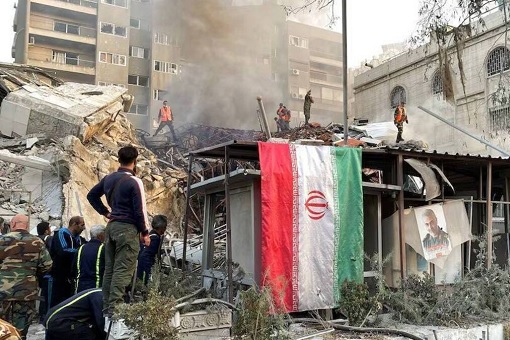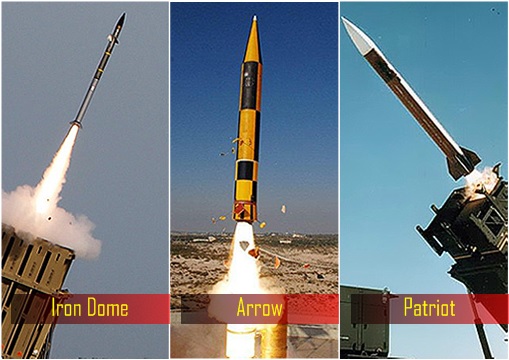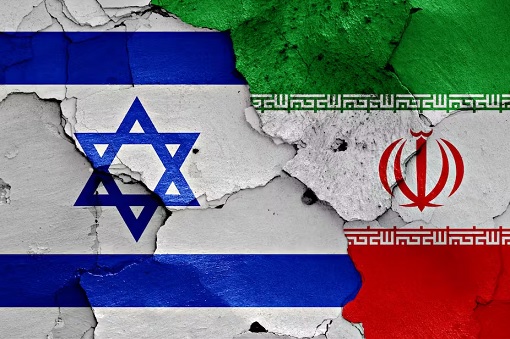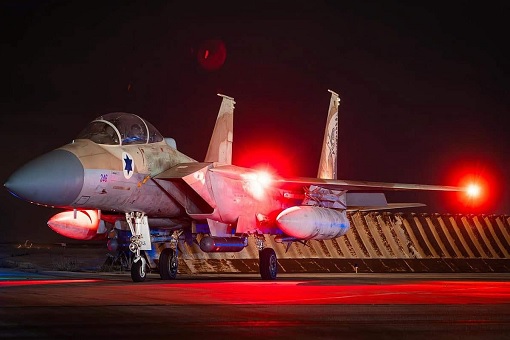Many think Israel will hit Iran on October 7, the anniversary of Hamas attack on Israel last year which killed 1,200 Israelis and resulted in over 200 hostages taken. It didn’t happen. If the Jewish state’s timing of retaliation and military strategy could be easily guessed, then there won’t be any element of surprise, would it? Nevertheless, it’s a guarantee that Israel will hit enemy Iran.
After Tehran’s massive 180 ballistic missile attacks on Israel – the largest-ever single ballistic missile attack in history – it’s still unclear how or when Tel Aviv would respond. It didn’t help that Iran said the attack was just the appetizer, with more to come if Israel dares to respond. Such statements were seen as provocative and arrogance, making Israel even more determine to retaliate.
Like the previous War of Words between U.S. President Donald Trump and North Korean Dictator Kim Jong-un, both Israeli and Iranian leaders cannot afford to lose face and seen as weak. The only difference is PM Benjamin Netanyahu and Ayatollah Ali Khamenei have pressed the buttons to lob missiles against each other, and the stake is getting higher.

On April 13, Iran attacked Israel – directly – for the first time in history. Unleashing more than 300 missiles and suicide drones, it was a sudden deviation from its decade-old doctrine of indirectly attacking Israel through its proxies. Iran’s assault was in retaliation for an earlier Israeli strike on the Iranian consulate in Syria on April 1, which killed Iran’s top commander Brigadier General Mohammad Reza Zahedi.
In response, Israel launched a series of missile strikes on Iranian military sites, including one near Isfahan, home to Iran’s main nuclear research facility, and other strategic military strikes. However, the “limited” retaliatory strikes were mocked and ridiculed as lame by many in Israel. Netanyahu didn’t have a choice. Orchestrated by Joe Biden, the U.S. president had told Netanyahu to just “take the win”.
Today, the game-play has changed and the landscape is different. Having weakened Hamas in Gaza, the IDF (Israel Defence Forces) is shifting to Lebanon. From the assassination of Hamas political leader Ismail Haniyeh on Iranian soil to the pagers and walkie-talkies attacks, and from the assassination of Hezbollah leader Hassan Nasrallah to the bombing of Houthis, Iran has been greatly humiliated.
But despite claiming victory after teaching Israel a lesson with Iranian’s 180 ballistic missiles, Tehran knew the consequences. Like a chess game, it can’t attack again whilst waiting for Israel’s turn. There are already wild speculations that Iran could be nuked. Israel’s choice is both easy and challenging. It’s easy because it can’t play the tit-for-tat game, but go for the kill to permanently disable Iran.
The conventional wisdom is this – “defence is more expensive than offence”. Iranian’s ballistic missile with a range of 1,500 to 2,000 kilometres costs about US$1 million a pop. The 180 missiles fired had burned around US$200 million. But Iran has managed, thanks to Biden’s soft approach towards Tehran and despite international sanctions, to export oil worth US$35 billion annually.
Until the Iron Beam laser interception system is developed and operated, Israel’s older Arrow-2 missile alone costs approximately US$3 million apiece. Therefore, the cost of intercepting the 180 missiles would be more than double the cost of the Iranian missiles. The good news is the Israel’s air defence systems are being funded by the United States.
Even though Israel’s Iron Dome managed to intercept most of the rockets and deserves thumbs up, some of them appeared to have breached the anti-missile system. No defence system is perfect. Either it cracked under overwhelming incoming ballistic missiles, or was deliberately allowed to slip through after calculations showed it would be cheaper not to intercept.
So, Israel’s main challenge is choosing which targets to hit. It could hit a wide range of targets in Iran if it wanted to, including military and intelligence sites, senior commanders, oil terminals and refineries or even nuclear sites. Heck, it could even neutralize the Iranian supreme leader. Going nuclear would be the last card as Israel has a long list of targets to play around.
But Israel will have to balance the potential reaction from Iran, including the risk that Tehran could choose to launch attacks on Arab Gulf states that host U.S. air bases or choose to plant sea mines in the Strait of Hormuz. Already, there are reports that Tehran has warned Saudi Arabia and its allies that when push comes to shove, Iran may drag the entire region into its war with Israel.
Netanyahu might have to consider Biden’s warning not to strike Iranian nuclear facilities, but at the same time he may listen to Trump, who said Israel should hit Iran’s nuclear sites first and worry about everything else later. However, even if the nuclear facilities are spared, it’s not because Netanyahu is afraid of Biden, but rather because it will certainly spark a full-blown war in the Middle East.
Israel could later go for the nuclear program if Iran responds (assuming Tehran still has the capability to retaliate). While Biden warns Iran’s nuclear facility is out of reach for now, he also said “any response should be proportionate“. This means the IDF can similarly send 180 ballistic missiles, and that would mean a terrible destruction to Iran’s infrastructure due to its deplorable defence systems.
At a ratio of 3 missiles to one target site, Israel is looking at 60 Iranian targets – a massive destruction that could seriously cripple the Shia Muslims’ military. And if it’s one missile to each target, the massive retaliation could involve multiple waves of rockets raining on Iran. If Tehran responds, it would be in a weaker position, and this time Biden cannot stop Tel Aviv from bombing the nuclear military programme.
Not only Sleepy Joe said the US would not support Israel targeting Iran’s nuclear program, he also did not support a strike on Iranian oil infrastructure for fear of skyrocketing oil prices. High energy prices would affect Kamala Harris chances in the upcoming November presidential election, which could spark inflation and recession, making it even more difficult to her administration if she wins.
Of course, Israel has not given assurances to the Biden administration that targeting Iran’s nuclear facilities is off the table. It’s hard to imagine how Israel can obey Uncle Sam not to hit both nuclear site and oil infrastructure. Israel is likely to launch a large-scale airstrike against Iran’s oil industry and possibly a symbolic attack on a military target related to its nuclear programme.
To hit Iran where it hurts to most, Kharg Island, which is Iran’s biggest oil terminal and exports most of its oil, could be a likely target of an Israeli attack. Located 25-km off the coast of Iran, the island with a total area of 20 km2 (7.7 square mile) actually handles more than 90% of the country’s crude exports with loading capacity of 7 million barrels per day.
Several energy analysts predict that global oil prices could see an immediate spike of as much as 5% in the event of an Israeli attack on this terminal – it has the capacity to store 23 million barrels of crude. Due to its close distance to oilfield regions, its good offshore position and suitable depth for gigantic oil vessels berthing, it becomes the most strategic place for crude oil exports and loading site.
Interestingly, Kharg Islandwas also the same place linked to the Iran-Contra scandal under Ronald Reagon administration, in which the CIA was involved in illegal arms deals with Iran between 1981 and 1986 in exchange for U.S. hostages. Prior to that, U.S. President Jimmy Carter had considered attacking Kharg Island in retaliation for Iran holding American hostages, but aborted the plan after discovering Iranian’s 1,000 troops there.
While Mr Carter chicken out about an air strike or an occupation on the island due to fear of triggering opposition from Arab allies in the Gulf as well as the entire world, Israel is capable of hitting the Iranian island without concern. Oil represents the best leverage over Iran, with oil exports representing up to 70% of Iranian regime revenues and oil output averaged 2.82 million barrels per day in 2023.
More importantly, Iranian oil is a small fraction of Middle East oil production – only around 12.5% – nearly 4 times smaller than the largest producer, Saudi Arabia. Saudi is now pumping a third less oil than it did during the Trump administration, with its daily oil production down from its peak 13 million barrels to now only around 9 million barrels a day after several voluntary production cuts.
It’s not rocket science that Saudi would be more than happy to restore its oil production to full capacity, bringing about 4 million barrels a day of oil to the global marketplace – more than enough to make up for any drop in Iranian exports – in the event Israel destroys Iran’s Kharg Island. Not only Sunni-led Saudi could seize market share from Shia-led Iran, but it’s in the Saudi’s strategic and economic interest to see the collapse of enemy Iran.
It won’t be a walk in the park though. Iran possessed advanced air defence and radar equipment such as S-300 from Russia. Besides Kharg Island, Israel could also target the Abadan refinery, which is near the border with Iraq. That facility accounts for 17% of Iran’s refining capacity and 13% of its gasoline supply. Iranian oil and gas terminals are sitting ducks for IDF. Still, Israel may decide to bomb Iran’s nuclear facilities anyway
- financetwitter









No comments:
Post a Comment
Note: Only a member of this blog may post a comment.